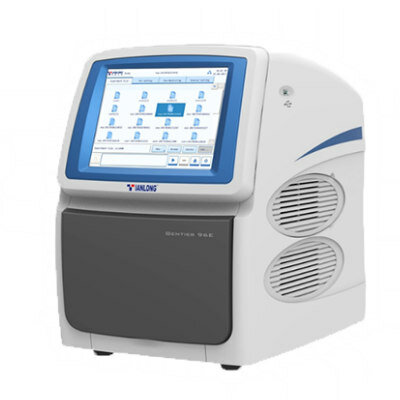Zika Virus IgM Antibody Found in West Nile Virus Patients
|
By LabMedica International staff writers Posted on 05 Oct 2021 |

Image: The Zika IgM antibody-capture, enzyme-linked immunosorbent assay (Zika MAC-ELISA) for antibody testing (Photo courtesy of the Centers for Diseases Control and Prevention).
West Nile virus (WNV) and Zika virus (ZIKV) are mosquito-borne viruses in the family Flaviviridae. Residents in, and travelers to, areas where the viruses are circulating are at risk for infection, and both viruses can cause an acute febrile illness.
In the contiguous USA, WNV disease is the most commonly reported arboviral disease, with about 2,000 to 6,000 reported cases each year. WNV disease presentations range from mild febrile illness to severe neuroinvasive disease. Almost all ZIKV disease cases in the continental USA are travel associated.
Vector Borne Disease experts at the Centers for Diseases Control and Prevention (CDC, Fort Collins, CO, USA) included serum samples from 153 persons with confirmed recent WNV infection in their analysis. The median age of patients was 59 years (range 10–92 years) and 53 (35%) were female. Samples were collected at a median of seven days (range 0–40 days) after symptom onset. Serum samples were tested for the presence of ZIKV IgM antibody with CDC's envelope protein antigen-based ZIKV IgM antibody capture-ELISA (Zika MAC-ELISA). A P/N value <2.0 was interpreted as negative, a P/N from 2.0 to <3.0 was equivocal, and a P/N ≥ 3.0 was positive.
The scientists reported that among 153 sera from patients with acute WNV infection, the ZIKV IgM antibody result was positive in 56 (37%; 95% confidence interval [CI] 29–44%) and equivocal in 28 (18%; 95% CI 13–25%). With 55% of samples having cross-reactive antibodies, it is important for health care providers to request appropriate testing based on the most likely cause of a patient's possible arboviral infection considering their clinical symptoms and signs, travel history, and place of residence. Patients were significantly more likely to have a ZIKV IgM antibody-positive or equivocal result if their sample had both WNV and St. Louis encephalitis virus (SLEV)-neutralizing antibodies, compared with patients with samples with only WNV-neutralizing antibodies (relative risk = 2.1), and this association was not modified by nor required adjustment for sex.
The authors concluded that for cases where the epidemiology does not support the preliminary IgM findings, confirmatory neutralizing antibody testing should be performed. These measures will avoid an incorrect diagnosis of ZIKV infection, based on cross-reactive antibodies, in a person truly infected with WNV. The study was published on July 22, 2021 in the journal Vector-Borne and Zoonotic Diseases.
Related Links:
Centers for Diseases Control and Prevention
In the contiguous USA, WNV disease is the most commonly reported arboviral disease, with about 2,000 to 6,000 reported cases each year. WNV disease presentations range from mild febrile illness to severe neuroinvasive disease. Almost all ZIKV disease cases in the continental USA are travel associated.
Vector Borne Disease experts at the Centers for Diseases Control and Prevention (CDC, Fort Collins, CO, USA) included serum samples from 153 persons with confirmed recent WNV infection in their analysis. The median age of patients was 59 years (range 10–92 years) and 53 (35%) were female. Samples were collected at a median of seven days (range 0–40 days) after symptom onset. Serum samples were tested for the presence of ZIKV IgM antibody with CDC's envelope protein antigen-based ZIKV IgM antibody capture-ELISA (Zika MAC-ELISA). A P/N value <2.0 was interpreted as negative, a P/N from 2.0 to <3.0 was equivocal, and a P/N ≥ 3.0 was positive.
The scientists reported that among 153 sera from patients with acute WNV infection, the ZIKV IgM antibody result was positive in 56 (37%; 95% confidence interval [CI] 29–44%) and equivocal in 28 (18%; 95% CI 13–25%). With 55% of samples having cross-reactive antibodies, it is important for health care providers to request appropriate testing based on the most likely cause of a patient's possible arboviral infection considering their clinical symptoms and signs, travel history, and place of residence. Patients were significantly more likely to have a ZIKV IgM antibody-positive or equivocal result if their sample had both WNV and St. Louis encephalitis virus (SLEV)-neutralizing antibodies, compared with patients with samples with only WNV-neutralizing antibodies (relative risk = 2.1), and this association was not modified by nor required adjustment for sex.
The authors concluded that for cases where the epidemiology does not support the preliminary IgM findings, confirmatory neutralizing antibody testing should be performed. These measures will avoid an incorrect diagnosis of ZIKV infection, based on cross-reactive antibodies, in a person truly infected with WNV. The study was published on July 22, 2021 in the journal Vector-Borne and Zoonotic Diseases.
Related Links:
Centers for Diseases Control and Prevention
Latest Immunology News
- Diagnostic Blood Test for Cellular Rejection after Organ Transplant Could Replace Surgical Biopsies
- AI Tool Precisely Matches Cancer Drugs to Patients Using Information from Each Tumor Cell
- Genetic Testing Combined With Personalized Drug Screening On Tumor Samples to Revolutionize Cancer Treatment
- Testing Method Could Help More Patients Receive Right Cancer Treatment
- Groundbreaking Test Monitors Radiation Therapy Toxicity in Cancer Patients
- State-Of-The Art Techniques to Investigate Immune Response in Deadly Strep A Infections
- Novel Immunoassays Enable Early Diagnosis of Antiphospholipid Syndrome
- New Test Could Predict Immunotherapy Success for Broader Range Of Cancers
- Simple Blood Protein Tests Predict CAR T Outcomes for Lymphoma Patients
- Cell Sorter Chip Technology to Pave Way for Immune Profiling at POC
- Chip Monitors Cancer Cells in Blood Samples to Assess Treatment Effectiveness
- Automated Immunohematology Approaches Can Resolve Transplant Incompatibility
- AI Leverages Tumor Genetics to Predict Patient Response to Chemotherapy
- World’s First Portable, Non-Invasive WBC Monitoring Device to Eliminate Need for Blood Draw
- Predictive T-Cell Test Detects Immune Response to Viruses Even Before Antibodies Form
- Single Blood Draw to Detect Immune Cells Present Months before Flu Infection Can Predict Symptoms
Channels
Clinical Chemistry
view channel
3D Printed Point-Of-Care Mass Spectrometer Outperforms State-Of-The-Art Models
Mass spectrometry is a precise technique for identifying the chemical components of a sample and has significant potential for monitoring chronic illness health states, such as measuring hormone levels... Read more.jpg)
POC Biomedical Test Spins Water Droplet Using Sound Waves for Cancer Detection
Exosomes, tiny cellular bioparticles carrying a specific set of proteins, lipids, and genetic materials, play a crucial role in cell communication and hold promise for non-invasive diagnostics.... Read more
Highly Reliable Cell-Based Assay Enables Accurate Diagnosis of Endocrine Diseases
The conventional methods for measuring free cortisol, the body's stress hormone, from blood or saliva are quite demanding and require sample processing. The most common method, therefore, involves collecting... Read moreMolecular Diagnostics
view channel
Unique Autoantibody Signature to Help Diagnose Multiple Sclerosis Years before Symptom Onset
Autoimmune diseases such as multiple sclerosis (MS) are thought to occur partly due to unusual immune responses to common infections. Early MS symptoms, including dizziness, spasms, and fatigue, often... Read more
Blood Test Could Detect HPV-Associated Cancers 10 Years before Clinical Diagnosis
Human papilloma virus (HPV) is known to cause various cancers, including those of the genitals, anus, mouth, throat, and cervix. HPV-associated oropharyngeal cancer (HPV+OPSCC) is the most common HPV-associated... Read moreHematology
view channel
Next Generation Instrument Screens for Hemoglobin Disorders in Newborns
Hemoglobinopathies, the most widespread inherited conditions globally, affect about 7% of the population as carriers, with 2.7% of newborns being born with these conditions. The spectrum of clinical manifestations... Read more
First 4-in-1 Nucleic Acid Test for Arbovirus Screening to Reduce Risk of Transfusion-Transmitted Infections
Arboviruses represent an emerging global health threat, exacerbated by climate change and increased international travel that is facilitating their spread across new regions. Chikungunya, dengue, West... Read more
POC Finger-Prick Blood Test Determines Risk of Neutropenic Sepsis in Patients Undergoing Chemotherapy
Neutropenia, a decrease in neutrophils (a type of white blood cell crucial for fighting infections), is a frequent side effect of certain cancer treatments. This condition elevates the risk of infections,... Read more
First Affordable and Rapid Test for Beta Thalassemia Demonstrates 99% Diagnostic Accuracy
Hemoglobin disorders rank as some of the most prevalent monogenic diseases globally. Among various hemoglobin disorders, beta thalassemia, a hereditary blood disorder, affects about 1.5% of the world's... Read moreMicrobiology
view channel
Mouth Bacteria Test Could Predict Colon Cancer Progression
Colon cancer, a relatively common but challenging disease to diagnose, requires confirmation through a colonoscopy or surgery. Recently, there has been a worrying increase in colon cancer rates among younger... Read more.jpg)
Unique Metabolic Signature Could Enable Sepsis Diagnosis within One Hour of Blood Collection
Sepsis is a life-threatening condition triggered by an extreme response of the body to an infection. It requires immediate medical intervention to prevent potential death or lasting damage.... Read morePathology
view channel
Spatial Tissue Analysis Identifies Patterns Associated With Ovarian Cancer Relapse
High-grade serous ovarian carcinoma is the most lethal type of ovarian cancer, and it poses significant detection challenges. Typically, patients initially respond to surgery and chemotherapy, but the... Read more.jpg)
Unique Hand-Warming Technology Supports High-Quality Fingertip Blood Sample Collection
Warming the hand is an effective way to facilitate blood collection from a fingertip, yet off-the-shelf solutions often do not fulfill laboratory requirements. Now, a unique hand-warming technology has... Read moreTechnology
view channel
New Diagnostic System Achieves PCR Testing Accuracy
While PCR tests are the gold standard of accuracy for virology testing, they come with limitations such as complexity, the need for skilled lab operators, and longer result times. They also require complex... Read more
DNA Biosensor Enables Early Diagnosis of Cervical Cancer
Molybdenum disulfide (MoS2), recognized for its potential to form two-dimensional nanosheets like graphene, is a material that's increasingly catching the eye of the scientific community.... Read more
Self-Heating Microfluidic Devices Can Detect Diseases in Tiny Blood or Fluid Samples
Microfluidics, which are miniature devices that control the flow of liquids and facilitate chemical reactions, play a key role in disease detection from small samples of blood or other fluids.... Read more
Breakthrough in Diagnostic Technology Could Make On-The-Spot Testing Widely Accessible
Home testing gained significant importance during the COVID-19 pandemic, yet the availability of rapid tests is limited, and most of them can only drive one liquid across the strip, leading to continued... Read moreIndustry
view channel
ECCMID Congress Name Changes to ESCMID Global
Over the last few years, the European Society of Clinical Microbiology and Infectious Diseases (ESCMID, Basel, Switzerland) has evolved remarkably. The society is now stronger and broader than ever before... Read more
Bosch and Randox Partner to Make Strategic Investment in Vivalytic Analysis Platform
Given the presence of so many diseases, determining whether a patient is presenting the symptoms of a simple cold, the flu, or something as severe as life-threatening meningitis is usually only possible... Read more
Siemens to Close Fast Track Diagnostics Business
Siemens Healthineers (Erlangen, Germany) has announced its intention to close its Fast Track Diagnostics unit, a small collection of polymerase chain reaction (PCR) testing products that is part of the... Read more
















